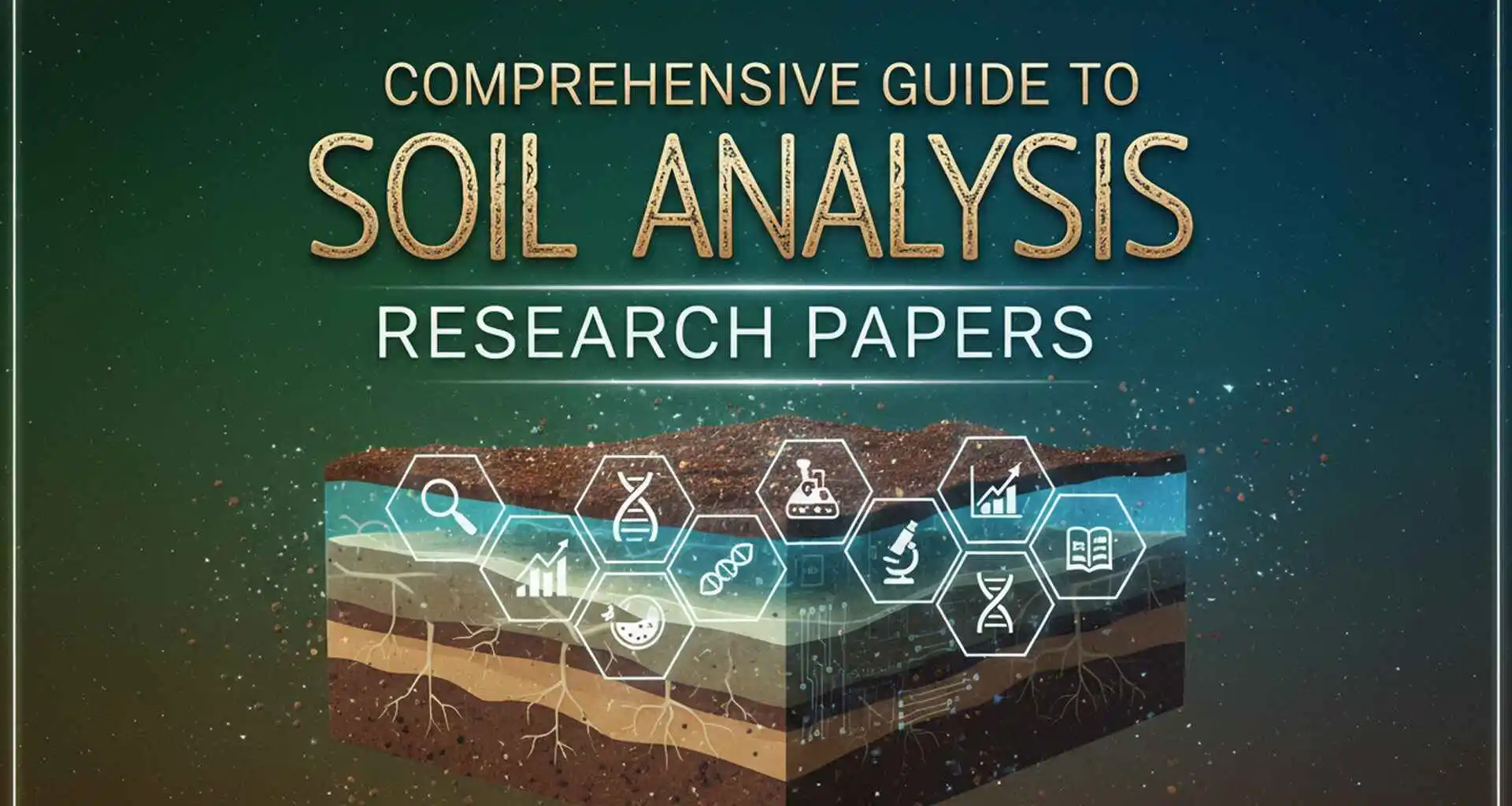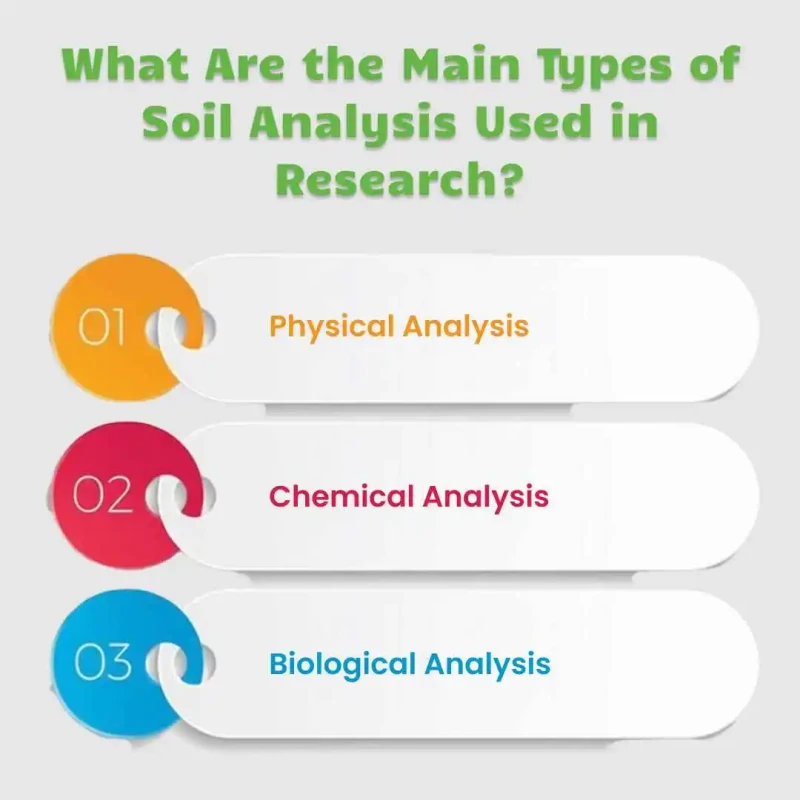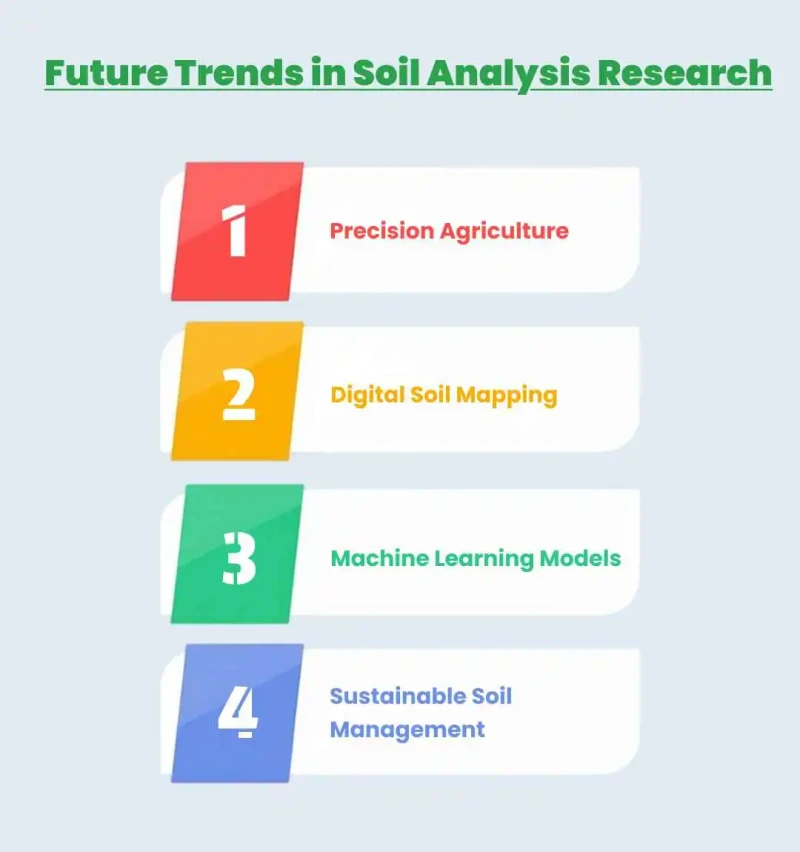Biological analysis is the study of soil’s living components and their interactions to evaluate its fertility, nutrient dynamics, and ecological health. Biological analysis consists of:

Luca
Every crop’s fate begins beneath our feet. A soil analysis research paper is an important tool in the developing fields of agriculture and environmental studies to understand the Earth's dynamic systems. Rather than just mere dirt, soil is a living medium for plant health, water purity, and ecosystem stability.
Rigorous soil analysis reveals the hidden processes sustaining ecosystems. These studies are indispensable in the research work of scientists, agronomists, and ecologists in their effort to improve the fertility of the soil and the resilience of the environment.
By the end of this guide, you’ll have a full-scale understanding of how to structure, conduct, and publish a high-quality soil analysis research paper from field sampling to statistical analysis and precise scientific writing
In short, soil analysis is a scientific discovery of the chemical, physical, and biological components that constitute soil. It is not dirt analysis; it is cracking the code to an elevated system that nourishes life on Earth.
Some of the most significant applications of soil analysis are:
Understanding soil composition — identifying minerals, nutrients, and organic matter.
Determining fertility levels — assessing the soil’s ability to support plant growth.
Detecting contamination — identifying pollutants such as heavy metals or chemical residues.
Evaluating land suitability — deciding which crops or vegetation can thrive in a given area.
Soil science enables scientists to relate soil attributes to sustainability of the land use, sensitivity to climate, and the effect on the environment. In the field, it enables farmers, builders, and planners to make rational choices in agriculture, construction, and reclamation.

Soil isn’t simple and neither is the science behind studying it. Each type of analysis offers a different view of the ground beneath our feet.
Physical soil tests include texture, structure, and density. Physical analysis considers the combination of sand, silt, and clay interacting with each other to form different soil textures. A few of the most critical parameters are:
Texture: Regulates water-retention and aeration.
Structure: Considers the structural strength of soil.
Moisture content: Of very significant consideration in a drought tolerance specification and irrigation concept.
Porosity: It affects drainage and root penetration to only a limited extent.
Chemical analysis examines the soil’s chemical properties to determine its fertility, nutrient balance, and overall quality. Chemical analysis of soil considers:
pH: Index of alkalinity or acidity of the soil.
Nutrient level: Particularly nitrogen (N), phosphorus (P), and potassium (K).
Salinity: Excess salt inhibits plant growth.
Organic matter content: Forms structure and ability to retain nutrients.
Microbial processes: The driving force behind nutrient cycling and decomposition
Enzyme activities: Indicators of soil vitality and fertility.
Faunal soil diversity: Earthworms and arthropods enhance aeration and organic matter cycling.
Technique-based technology is part of modern soil science, including:
Spectroscopy & Chromatography: Optimal for precise elemental and compound analysis.
Remote Sensing & GIS Mapping: Best applied to surveillance of large areas and computer mapping of the soil.
X-Ray Diffraction (XRD): Used to analyze the mineralogical composition of soil samples.
Every solid research paper follows a structured scientific format better referred to as IMRaD (Introduction, Methods, Results, and Discussion). Let's talk about them individually:
Your title must be short and descriptive, and reflect the level of research. Your abstract is a condensation of your entire report: a general overview of the objectives, the research method used, the main findings, and implications a general overview of the objectives, the research method used, the main conclusions, and implications.
Formulate the question and significance of study on global or local levels. Establish why there needs to be research for greater yield, prevention of soil erosion, or data on polluting activity.
Describe every step, from sample depth to analysis equipment utilized. Describe statistical techniques employed, so it can be replicated.
Display raw and treated data in tables, graphs, charts. Identify trends and outliers but do not annotate until discussion.
Summarize and synthesize findings. Contrast findings, detail, and speculate impacts of the future on soil management.
Present the contribution of the study and offer potential future directions or uses.
Utilize all literature related to the study in accepted styles (APA, MLA, or journal style).
Choose an appropriate research topic such as soil contamination around industrial factories or loss of nutrients in farms.
Sampling is required, depth, time, and location are required. Label, store, and pre-treat to be tested.
Perform physical, chemical, and biological analysis depending on the subject of study. Calibrate equipment and standardize technique.
Repeat all readings to the letter. Use statistical techniques such as ANOVA or regression analysis to obtain patterns and significance levels.
Place it in the context of the research query. What is your research adding to the body of knowledge in soil science?
It's not a walk through the countryside — it's a dirty job, literally and figuratively:
Sampling Errors: Physical heterogeneity of soil structure over a small distance can generate skewed information.
Instrumental Limitations: Measurement errors because of faulty calibration provide erroneous readings.
Interpretation Problems: Multivariate soil data are better represented with higher-level statistical models.
Environmental and Seasonal Variables: Temperature, rain, and biological processes vary by season and consequently impact constancy.
Doing a soil analysis research paper isn't all about crunching numbers, it's about presenting scientific facts with precision, intent, and persuasiveness. Here's how to take your paper from good to groundbreaking:
Adhere to the traditional scientific format: Introduction, Methods, Results, and Discussion (IMRaD).
Introduction: State your research question, context, and why it matters what soil science question are you answering?
Methods: Explain your sampling, equipment, and analysis techniques so another researcher could replicate your study.
Results: Present your data in a straightforward way with no interpretation yet.
Discussion: Interpret results, derive implications, and compare findings with prior literature.
Keeping your paper structured in this way helps present clarity, scientific accuracy, and readability to reviewers and readers.
Don't reinvent the wheel while analyzing the soil. Use methods that have been adopted by agencies like the FAO (Food and Agriculture Organization), USDA, or ISO standards. Not only does this make your data acceptable, but also your research acceptable to peer reviewers.
Present your soil data using charts, graphs, and tables to simplify complex information. These visuals clearly show key patterns and variations. Well-designed graphics make your findings more engaging and easier to understand.
Relate your findings to both local and global soil science trends to show broader relevance. Connect your results with regional soil conditions and farming practices. Link them to global issues like nutrient loss and climate change for a wider perspective.
Science is useless if not used. End your paper with proposals that distill your research into practical recommendations for policymakers and the general public.
Examples are:
Suggesting soil management strategies to improve fertility.
Recommending pollution control measures for contaminated lands.
Advising on sustainable agricultural practices based on soil nutrient data.
Guiding reforestation or land restoration programs using your findings.
If it is your objective to have handy quality references for publication or research, begin with:
Journal of Soil Science and Plant Nutrition
Soil Biology & Biochemistry
Geoderma
Soil & Tillage Research
As a reference, utilize databases such as:
Scopus
Web of Science
Google Scholar
ScienceDirect

Soil science, too, is changing at a fast pace, bringing together old-fashioned ground observation and high-tech inputs. Here's where things are moving in the next few years:
Precision Agriculture: Time-staggered monitoring with IoT sensor-based input through satellite imaging of the soil.
Digital Soil Mapping: Use of AI coupled with GIS for scaling soil property prediction.
Machine Learning Models: Prediction of nutritional deficiency and risk of pollution.
Sustainable Soil Management: Emphasis on restoring the health of soil, carbon sequestration, and pollution control.
As technology advances, soil scientists will be able to predict ecosystem response with unprecedented accuracy, the norm of a greener, more sustainable future in agriculture.
Soil analysis research papers aren't tricks of the mind, they are sincere scientific tools towards ecological sustainability in agriculture, conservation ecology, and scientific investigation. Through the medium of conscious studies, precise testing, and free writing, scientists can unravel the subterranean secrets hidden beneath our feet.
So whatever your status as a student penning your initial paper or experienced researcher polishing your next paper don't forget: soil underpins life, and your research is its master plan.
If the process from laboratory work to mastering citation styles feels daunting, consider engaging professional research services. They can transform your findings into a well-structured, publication-ready paper that genuinely contributes to the field of soil science.